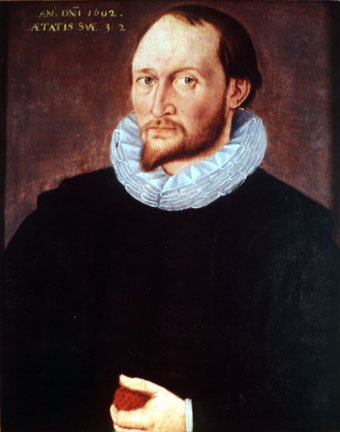Most people consider the Italian polymath Galileo Galilei to be the father of telescopic astronomy, although a lesser-known English physicist named Thomas Harriot may actually have been the first to observe the Moon through a lens. Despite not publishing a single word of his scientific output, Harriot was a prolific scholar who discovered numerous laws of nature prior to the likes of Newton, Descartes, and Leibniz, and created the first detailed lunar maps several months before Galileo did the same.
The rest of this article is behind a paywall. Please sign in or subscribe to access the full content.
Born in 1560, Harriot attended Oxford University before being employed by the English statesman and explorer Sir Walter Raleigh to teach astronomy and navigation to sea captains. He even accompanied Raleigh on his expedition to Virginia in 1585, where he learned the language of the Native Algonquian people and wrote about their way of life.
It wasn’t until the 1590s, however, that Harriot got the chance to retreat into his studies when he found a wealthy patron in the form of Henry Percy, Earl of Northumberland. He went on to produce thousands of pages of notes documenting his remarkable mathematical breakthrough, although these weren’t analyzed by historians until centuries after his death.

Thomas Harriot died in 1621 without publishing his works.
In addition to discovering the law of falling motion independently of Galileo, he also developed fully symbolic algebra and is thought to have inspired some of Descartes’ most famous theories. He was even briefly imprisoned when both Raleigh and Northumberland found themselves linked to the Gunpowder Plot in 1605, with the former eventually being executed for treason.
Soon after his release, Harriot turned his attention skywards, producing a map of the Moon as seen through a telescope on July 26, 1609. Galileo, meanwhile, didn’t achieve the same feat until early 1610.
Despite being beaten to the punch by several months, however, it was Galileo who took the credit after publishing not only his lunar diagrams but also his observations of Jupiter’s moons. Harriot’s notebooks also contain the earliest known drawings of sunspots as seen through a telescope – dated to December 1610 – although once again, his failure to publish this work enabled Galileo to get in there first.
Exactly why Harriot kept his findings to himself is unclear, although it’s possible that he simply had no financial incentive to publish since his work was funded by his generous patron, while Galileo depended on public recognition in order to finance his research. After his death in 1621, Harriot faded into historical obscurity until his notebooks were discovered some 150 years later in a mansion inherited by the heirs of the Earl of Northumberland.
Still, it wasn’t really until the 20th century that historians took a proper look at these, by which time Galileo’s name was firmly etched in the record books as the first person to observe the Moon – and many other celestial bodies – through a telescope.
Source Link: Who Was The First Person To See The Moon Through A Telescope?